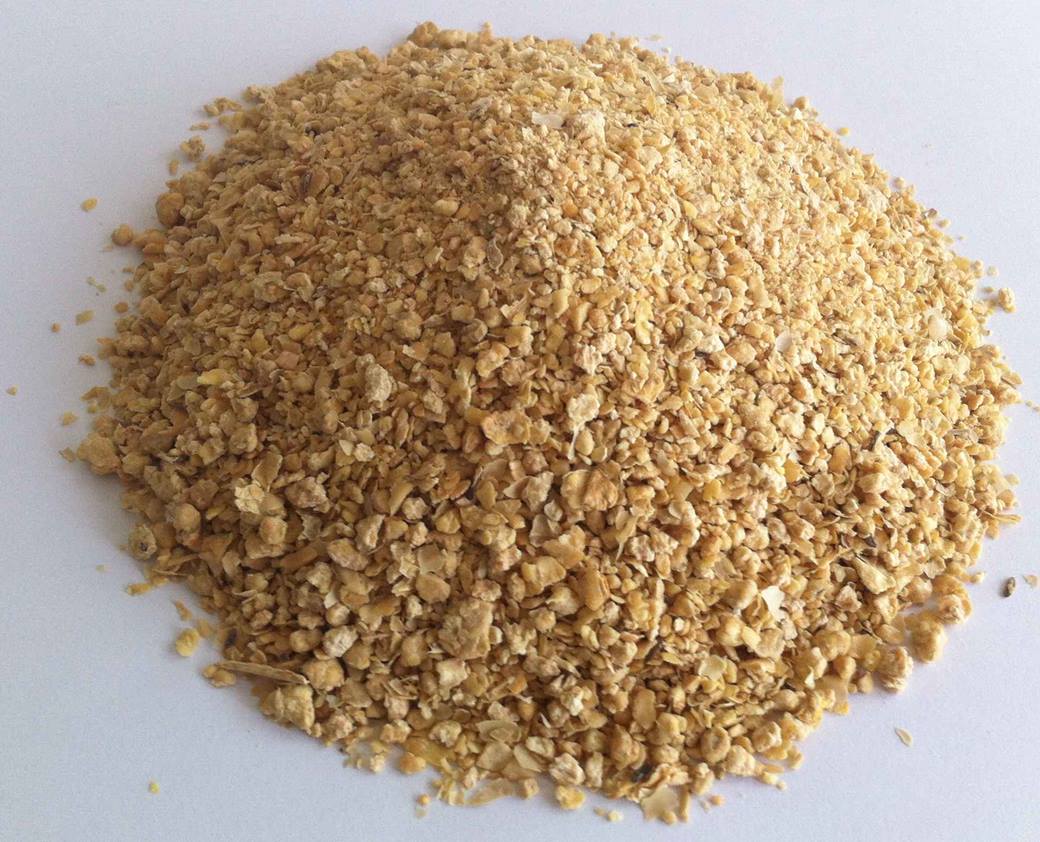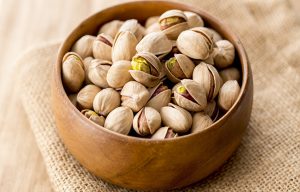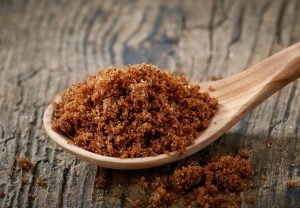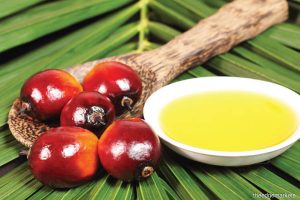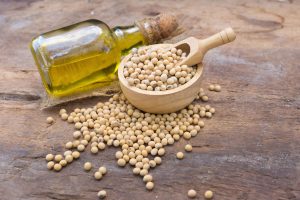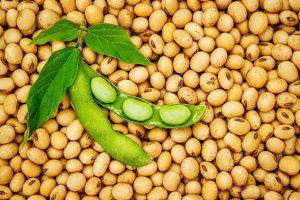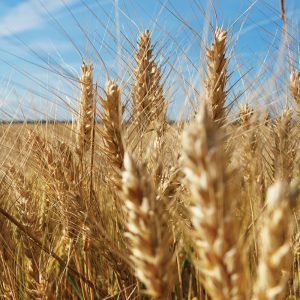Soybean meal is used in food and animal feeds, principally as a protein supplement, but also as a source of metabolizable energy. Typically 1 bushel (i.e. 60 lbs. or 27.2 kg) of soybeans yields 48 lbs. (21.8 kg) of soybean meal.[1] Some, but not all, soybean meal is produced from the residue left after oil extraction. Removal of the oil, which is used mostly in food, but also for industrial oils, soaps and biodiesel, involves crushing and either pressing or solvent extraction. Some, but not all, soybean meal contains ground soybean hulls. Soybean meal is heat-treated during production, to denature the trypsin inhibitors of soybeans, which would otherwise interfere with protein digestion.
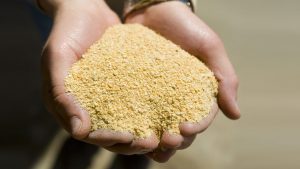
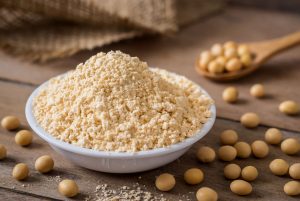
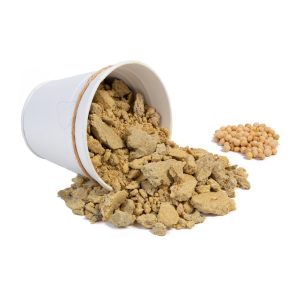
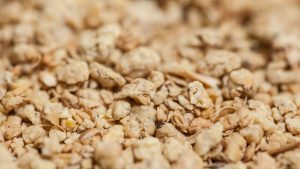
Soybean meal is the most important protein source used to feed farm animals. It represents two-thirds of the total world output of protein feedstuffs, including all other major oil meals and fish meal. Its feeding value is unsurpassed by any other plant protein source and it is the standard to which other protein sources are compared. While it has been an accepted part of livestock and poultry diets in the USA since the mid-1930s, soybean feed production took off in the mid-1970s and then accelerated in the early 1990s due to a growing demand from developing countries. The expansion of aquaculture and prohibitions on the feed use of slaughterhouse by-products have also fueled the demand for this high-quality source of protein.
Soybean meal is the by-product of the extraction of soybean oil. Several processes exist, resulting in different products. Soybean meal is usually classified for marketing by its crude protein content. High-protein types are obtained from dehulled seeds and contain 47-49% protein and 3% crude fibre (as fed basis). Other types of soybean meal include the hulls or part of the hulls and contain less than 47% protein and more than 6% crude fibre. In solvent-extracted soybean meals, the oil content is typically lower than 2% while it exceeds 3% in mechanically-extracted meals.
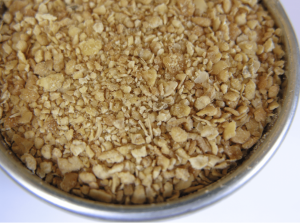
Soybean meal is available worldwide. In 2014, soybean meal production reached 243 million tons and accounted for 62.5% of oil meals (Soybean Meal Info Center, 2018). Main producers were China (76 MT), the USA (44 MT), Argentina (33 MT), Brazil (33 MT), and the EU-28 (12.5 MT). Main exporters were Argentina and Brazil. The EU-28 was the most important importer of soybean meal (22 MT) followed by South-East Asian countries like Indonesia, Malaysia, Thailand and the Philippines. In the EU-28, soybean meal represented 61% of the proteins used to feed livestock, 16% of compound feeds, and an amount of 24 MT. In the region, the demand for partially defatted soybean meal from labelled non-GMO soybean was reported to be about 10% of the total amount of imported soybean equivalent (3.4 MT). This demand also addresses the need for organic farming, or locally produced soybeans in 2020 in the EU (Royer et al., 2020).
There are 3 main processes to extract soybean oil:
• The most common process consists in extracting oil from soybean flakes by solvent. In the USA, virtually all soybeans (99%) are solvent-extracted. This method is the most efficient and about 1.5% oil is left in the resulting soybean meal.
• The second method consists in a mechanical extraction by a screw press (expeller). This method yields less oil and a soybean meal containing more than 5% residual oil.
• The third method combines extruding and expelling of soybean flakes, and uses solvent for oil extraction.

